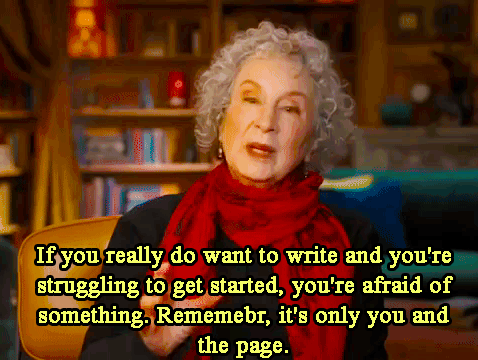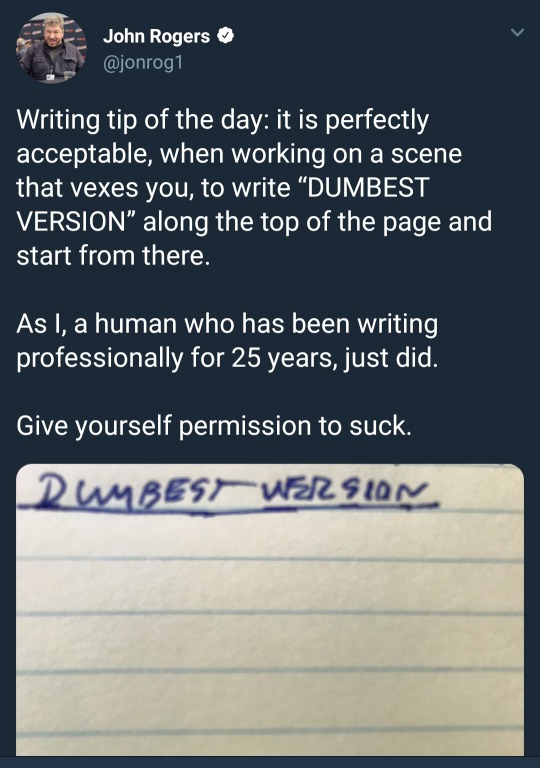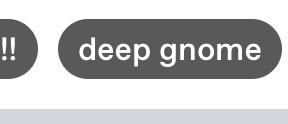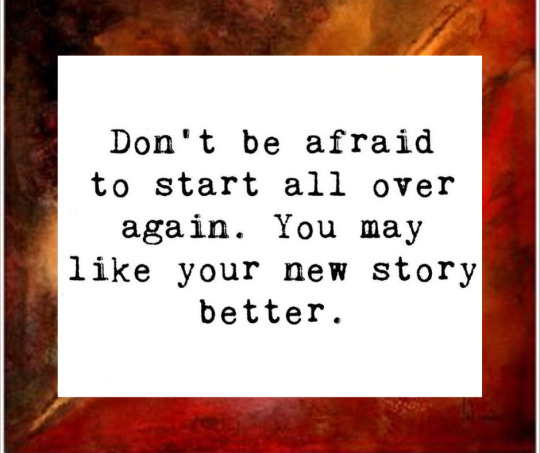Text
22 Essential Literary Devices and How to Use Them In Your Writing
hello, happy Monday. Hope you’re all having a wonderful day!
I will skip the pre-info and dive right into it.
What Is a Literary Device?
is a tool used by writers to hint at larger themes, ideas, and meaning in a story or piece of writing
The List of Literary Devices:
Allegory. Allegory is a literary device used to express large, complex ideas in an approachable manner. Allegory allows writers to create some distance between themselves and the issues they are discussing, especially when those issues are strong critiques of political or societal realities.
Allusion. An allusion is a popular literary device used to develop characters, frame storylines, and help create associations to well-known works. Allusions can reference anything from Victorian fairy tales and popular culture to the Bible and the Bard. Take the popular expression “Bah humbug”—an allusion that references Charles Dickens’ novella A Christmas Carol. The phrase, which is often used to express dissatisfaction, is associated with the tale’s curmudgeonly character, Ebenezer Scrooge.
Anachronism. Imagine reading a story about a caveman who microwaves his dinner, or watching a film adaptation of a Jane Austen novel in which the characters text each other instead of writing letters. These circumstances are examples of anachronisms, or an error in chronology—the kind that makes audiences raise their eyebrows or do a double-take. Sometimes anachronisms are true blunders; other times, they’re used intentionally to add humor or to comment on a specific time period in history.
Cliffhanger. It’s a familiar feeling: You’re on minute 59 of an hour-long television episode, and the protagonist is about to face the villain—and then episode cuts to black. Known as a cliffhanger, this plot device marks the end of a section of a narrative with the express purpose of keeping audiences engaged in the story.
Dramatic Irony. Remember the first time you read or watched Romeo and Juliet? The tragic ending of this iconic story exemplifies dramatic irony: The audience knows that the lovers are each alive, but neither of the lovers knows that the other is still alive. Each drinks their poison without knowing what the audience knows. Dramatic irony is used to great effect in literature, film, and television.
Extended Metaphor. Extended metaphors build evocative images into a piece of writing and make prose more emotionally resonant. Examples of extended metaphor can be found across all forms of poetry and prose. Learning to use extended metaphors in your own work will help you engage your readers and improve your writing.
Foreshadowing. At its core, storytelling has one ambition: to capture and sustain your reader’s attention and keep them reading your story. Foreshadowing, or slyly indicating a future event, is one technique a writer can use to create and build suspense.
Humor. Humor brings people together and has the power to transform how we think about the world. Of course, not everyone is adept at being funny—particularly in their writing. Making people laugh takes some skill and finesse, and, because so much relies on instinct, is harder to teach than other techniques. However, all writers can benefit from learning more about how humor functions in writing.
Imagery. If you’ve practiced or studied creative writing, chances are you’ve encountered the expression “paint a picture with words.” In poetry and literature, this is known as imagery: the use of figurative language to evoke a sensory experience in the reader. When a poet uses descriptive language well, they play to the reader’s senses, providing them with sights, tastes, smells, sounds, internal and external feelings, and even deep emotion. The sensory details in imagery bring works to life.
Irony. Irony is an oft-misunderstood literary device that hinges on opposites: what things are on the surface, and what they end up actually being. Many learn about dramatic irony through works of theater like Shakespeare’s Romeo and Juliet or Sophocles’s Oedipus Rex. When deployed with skill, irony is a powerful tool that adds depth and substance to a piece of writing.
Metaphor, Simile, and Analogy. Metaphors, similes, and analogies are three techniques used in speech and writing to make comparisons. Each is used in a different way, and differentiating between the three can get a little tricky: For example, a simile is actually a subcategory of metaphor, which means all similes are metaphors, but not all metaphors are similes. Knowing the similarities and differences between metaphor, simile, and analogy can help you identify which is best to use in any scenario and help make your writing stronger.
Motif. A motif is a repeated element that has symbolic significance to a story. Sometimes a motif is a recurring image. Sometimes it’s a repeated word or phrase or topic. A motif can be a recurrent situation or action. It can be a sound or a smell or a temperature or a color. The defining aspect is that a motif repeats, and through this repetition, a motif helps to illuminate the central ideas, themes, and deeper meaning of the story in which it appears.
Motif vs. Symbol. Both motifs and symbols are used across artistic mediums: Painters, sculptors, playwrights, and musicians all use motifs and symbols in their respective art forms. And while they are similar literary terms, “motif” and “symbol” are not synonyms.
Oxymoron. An oxymoron is a figure of speech: a creative approach to language that plays with meaning and the use of words in a non-literal sense. This literary device combines words with contradictory definitions to coin a new word or phrase (think of the idiom “act naturally”—how can you be your natural self if you’re acting?). The incongruity of the resulting statement allows writers to play with language and meaning.
Paradox. “This sentence is a lie.” This self-referential statement is an example of a paradox—a contradiction that questions logic. In literature, paradoxes can elicit humor, illustrate themes, and provoke readers to think critically.
Personification. In writing, figurative language—using words to convey a different meaning outside the literal one—helps writers express themselves in more creative ways. One popular type of figurative language is personification: assigning human attributes to a non-human entity or inanimate object in an effort to express a point or idea in a more colorful, imaginative way.
Satire. Satire is so prevalent in pop culture that most of us are already very familiar with it, even if we don’t always realize it. Satire is an often-humorous way of poking fun at the powers that be. Sometimes, it is created with the goal to drive social change. Satire can be part of any work of culture, art, or entertainment—it has a long history, and it is as relevant today as it was in ancient Rome.
Situational Irony. Irony: it’s clear as mud. Theorists quibble about the margins of what constitutes irony, but situational irony is all around us—from humorous news headlines to the shock twists in a book or TV show. This type of irony is all about the gap between our expectations and reality, and it can make a memorable and powerful impression when we encounter it.
Suspense. No matter what type of story you’re telling, suspense is a valuable tool for keeping a reader’s attention and interest. Building suspense involves withholding information and raising key questions that pique readers’ curiosity. Character development plays a big role in generating suspense; for example, if a character’s desire is not fulfilled by the end of the book, the story will not feel complete for the reader.
Symbolism. An object, concept, or word does not have to be limited to a single meaning. When you see red roses growing in a garden, what comes to mind? Perhaps you think literally about the rose—about its petals, stem, and thorns, or even about its stamen and pistil as a botanist might. But perhaps your mind goes elsewhere and starts thinking about topics like romance, courtship, and Valentine’s Day. Why would you do this? The reason, of course, is that over the course of many generations, a rose’s symbolic meaning has evolved to include amorous concepts.
Verisimilitude. Verisimilitude (pronounced ve-ri-si-mi-li-tude) is a theoretical concept that determines the semblance of truth in an assertion or hypothesis. It is also an essential tenet of fiction writing. Verisimilitude helps to encourage a reader’s willing suspension of disbelief. When using verisimilitude in writing, the goal is to be credible and convincing.
Vignette. A writer’s job is to engage readers through words. Vignettes—poetic slices-of-life—are a literary device that brings us deeper into a story. Vignettes step away from the action momentarily to zoom in for a closer examination of a particular character, concept, or place. Writers use vignettes to shed light on something that wouldn’t be visible in the story’s main plot.
I’ll make a post going into each of them individually in more detail later on!
Like, reblog and comment if you find this useful! If you share on Instagram tag me perpetualstories
Follow me on tumblr and Instagram for more writing and grammar tips and more!
3K notes
·
View notes
Text
Hot take of the day:
Backstory is not only not always essential; it is also not always desirable and can get in the way of the primary narrative.
8 notes
·
View notes
Text
Every writing advice thing ever: Don’t get bogged down in details on your first draft. Just write! ☺️
Me: How I begin this scene hinges on whether cheese sandwiches were served with mayo in the 50’s.
96K notes
·
View notes
Text
i hope you write, i hope we both write
25K notes
·
View notes
Text
Imagine your OC saying "Trans rights!".
260 notes
·
View notes
Text
Probably the single hardest lesson for me to internalize in writing was that you don’t design a character you design a character arc.
One reason you as a writer might end up stuck with a flat or boring character, or one that just isn’t doing the things you need to create a vibrant plot, despite working out all the details of their life for hours, is because you’ve made the mistake I always do. You’ve made a character who is a blend of all the characteristics you envision for them, rather than saving some characteristics for the end of their journey.
What do I mean by this? Maybe you envision a character who is a handsome prince, honest, brave, and true. In your plot, though, he’s going to be an antagonist for a bit but you don’t really want him to be seen as a bad guy, necessarily. But when you drop him into your story, he’s just… there. Being honest, brave, and true.
That’s because the prince has no character arc. He is a static figure, a cardboard cutout.
Let’s go a little deeper with a great example of one of the best character arcs in YA animation: Prince Zuko. He is, objectively, honest, brave, and true (to his cause of finding the Avatar) from the outset. But he’s also a dick. He’s a privileged, imperialist brat, who is rude to his uncle and vicious to our protagonists.
By the end of the series, though, Prince Zuko is still honest, brave, and true, but he’s also a good person who has learned many lessons over the course of his trials and obstacles. He has failed over and over again at his initial goal of capturing the Avatar. He has failed at winning his father’s regard. He has failed at numerous smaller goals of day to day adventures. He has learned from all of these. We have seen his journey. But, if you started your vision of how to write Zuko from who he ends up being, he’s got nowhere to go as a character.
It’s not just about what flaws he has corrected though. It’s about what lessons about life he has internalized. What flawed views of the world he has corrected and how.
Rather than saying, “The character starts out a dick and learns to be nice,” be more specific. “This character starts out believing the empire he is loyal to is morally in the right for its conquests, but over the course of working for that empire’s ruler and seeing his cruelty first hand, not to mention fighting the empire’s enemies and mingling with its civilian victims, he becomes a better person and learns the error of his ways.”
Already, right there, you have more than a cardboard character. You have a character who has an arc that molds to your plot.
20K notes
·
View notes
Text
Tips if you’re struggling to write or are feeling discouraged!
Figure out where you write best! For example I found out that I can only really write and focus when I write on a desktop computer at a desk. I can write on a laptop but I succumb to distractions much easier and like having a larger screen. Maybe you do better with a laptop or even pen and paper.
Know what environment you write best in! I do my best work when its quiet and calm and inside. I cant focus with music or if someone is in the room watching a loud video or something. Maybe you do best listening to music or with someone to bounce ideas with. Maybe it’s in your bed or on the couch or even outside. Move around and see what works best.
READ! I used to be a big reader in middle and high school until I graduated and went to college. I also worked full time and didnt want to waste my limited personal time reading. It was much easier to just watch a show on TV. So if you’re like me it might take some time to get back into it but I promise it helps. I found it easier to get back into reading by finding people who write similar to my own writing and then branch out to other styles. I also found I really can only read hardcover books. Dont know why but the odds of me reading and finishing a book are higher when its hardcover. Reading makes writers better and is recommended by many authors such as Stephen King.
Don’t believe you have to write every day! Just like the saying absence makes the heart grow fonder sometimes the best thing to do when you hit a wall is to just stop writing and take a rest. Do that thing all writers love and just think about your story or don’t! Taking time away from your story can help you come back to it refreshed and excited to start again.
Don’t beat yourself up for not writing large chunks of story every time. If all you can write is a paragraph then all you can write is a paragraph. Some days you may be able to pop out 10 pages others barely a page. All that matters is you sat down and wrote something.
Stop discouraging yourself for choosing yourself over writing. Chances are you arent a writer full time and have to work and go to school. Maybe you have kids or obligations that take time and energy. Life happens and it takes a lot out of you. If writing is making you stressed or even depressed similar to a normal job then stop. Take the time you need to feel better and come back to it when you’re ready. Writing is HARD. And it takes a lot more effort and energy then most people think. Writing should be a fun and exciting thing but if you arent getting anything positive from it then its okay to stop and take care of yourself.
Encourage yourself and other writers! We’re all in the same boat and we’re all evolving and getting better at the art. Not everyone has supportive friends and family to cheer them on and give encouraging feedback. Help each other out and let someone know if you like their work. It may be what they need to keep on going and improving.
3K notes
·
View notes
Text
When working on your goals …
1. Stop fantasizing: Those with too rosy a picture of the future tend to put less effort into reaching their goals. Instead, it’s better to be open to some things going wrong. It will help you see the obstacles - and think through beating them.
2. Visualise process NOT outcome: If you can think through all the steps you will forge a better plan … and it will also help to reduce anxiety.
3. Beware of the “what-the-hell effect”: Too many just give up when they stumble or fall down. It’s better to get up – and to see it as a journey.
4. Attack procrastination: It’s easy to procrastinate when things start getting tough. Make a start, keep your head down, and set yourself deadlines. Once you start you’ll feel much better, and the road won’t seem so hard.
5. Switch out of robot mode: A lot of behaviour is robotic and habitual. We copy other people, or we do the same old things. Take stock, and change those patterns, if they don’t lead to your goals.
6. Know when enough is enough: Sometimes we need to know when there’s no point in going on. We’re flogging a dead horse; things are never going to change. Perhaps it’s time to stop, and to work on something else.
2K notes
·
View notes
Text
On Writing for Yourself and Not for Notes
AKA How to Enjoy Writing for the Sake of it
Get off social media! I know it’s tempting to blabber on about a WIP to get those hella cool notes, but doing so only reinforces that writing’s only fun if it gets you attention. We all need that boost now and again, but too much of it will whittle away your self-reliance. Close your laptop, leave your phone in a different room, and sit down with a notebook if possible and if you need to. You’ll get to know what enthralls you personally about your story.
Don’t write for an audience for now. Tumblr likes to do this thing where it says “blah blah blah X is problematic in media” and while it’s well-intentioned, internalizing too much of this can make you feel like you’re trying to write through a maze and constantly failing at it. Forget about your audience–you can flag and catch problematic stuff in edits after tossing it to the betas.
Remember what made thirteen-year-old you lose their mind? Yeah, write that. Once you’ve let go of writing for an audience, you won’t worry about being “cringey” anymore, and that’s when things start to get real good and real fun. You don’t have to show your writing to anyone, or even tell them you wrote it, so just go buckwild! Trust me, it’s so liberating.
Your inner critic is useful–but not now. Shut that bitch up! Your job when drafting is to make something. If you did that, you win, so your critic’s opinion is worth squat here. However, if you try to fight her {I always envision mine as some bitchy middle-aged woman lol} she’s just gonna get louder. So tell yourself you can be as critical of your writing as you want during edits. You’re not working for perfect, or even good right now. You’re working for existing.
Remember that this is a process. Companies like tumblr are investing a BUNCH of cash into getting you to stay glued to their platforms, and if you’re a creator this might manifest in your feeling like you need to live your creative life online. You don’t. But retraining your brain isn’t easy. Remember that divorcing yourself from the validation of online noise takes work and time and a lot of discomfort and redirecting, especially for folks like me who thrive on routine. And don’t discipline. Redirect. Negativity has no right to be in your creative space ♥️
8K notes
·
View notes
Text

Here's Sawyer again! I'm having so much trouble writing them but I'm head over heels! I have a backstory, but I'm still uncertain about how to proceed lol. Seriously, making things official has me freaking out.
It's like everything comes to me in small fragments and then I worry if it's a mistake. So I suppose, somewhere down the line, I'll be using the MBTI test to figure them out a bit more.
It's hard for me to tell when writing is finished. So much different from visual art.
But anyway, I'm happy to share this picture with y'all! ❤️
#digitalart#digitalillustration#plants#digitaldrawing#art#artwork#krita#kritaart#foliage#green#cute#they/them#OC#Original_character#lineart#celshading#writing#fun
5 notes
·
View notes
Photo
I need this right now lol
I'm ✨struggling✨ as we speak.






Some gold advice from Margaret Atwood from her Master Class on creative writing trailer.
19K notes
·
View notes
Text
Your OC has just woken up from a nightmare that left them shaking. What happened in the nightmare and who was in it?
190 notes
·
View notes
Text
I’ve realized that I’d gotten way too absorbed into creating a perfect version of the story I was writing, which has resulted in me wasting a lot of time and getting nothing done.
Seeing this, I have decided to put it way on the back burner and work on other things. So for now, this blog will probably feature more reblogged content than original until I figure out what I’m doing for sure.
Here’s to making new things, I guess.
3 notes
·
View notes


